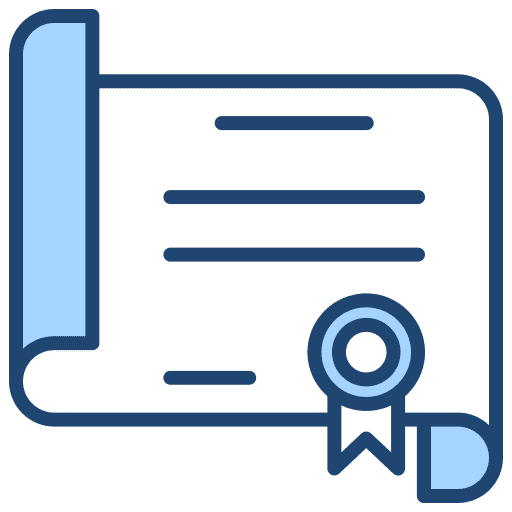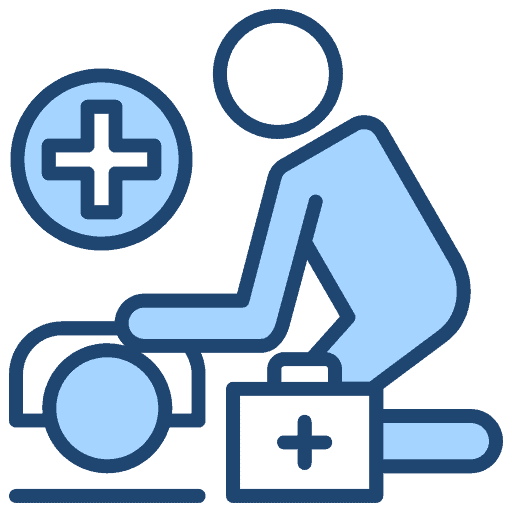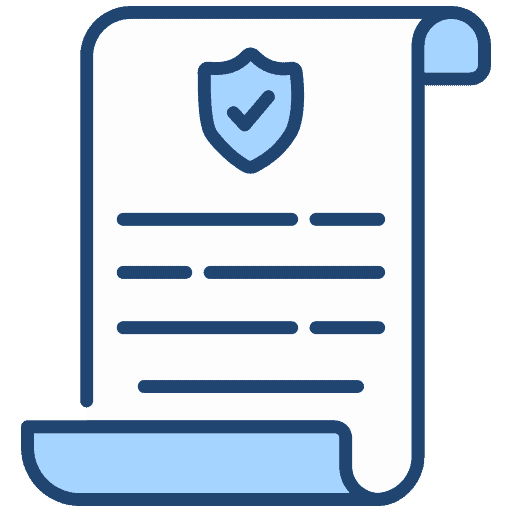
Learn at your own pace
Transform into an EMT
How Our EMT Course Works

Tuition: $795
Part 1: Online Learning

Tuition: $1350
Part 2: Skill Week
About Skill Week
Monday-Friday: 8:30a-4:30p
Saturday: 8:30a-around 5p
You must complete Part 1: Online Learning before attending Part 2: Skill Week.
You may register for both Part 1 and Part 2 at the same time, or you may start with just Part 1 and defer our registration for Part 2 until you are ready. Our registration form will guide you through this choice.
What's Included
Dates Offered
Daily Schedule (all classes must be attended in full):
Monday-Friday: 8:30a-4:30p
Saturday: 8:30a-around 5pm
2024 SKILL WEEKS:
- August 12 – 17, 2024: FULL. Waitlist Only.
- August 19 – 24, 2024: FULL. Waitlist Only.
- September 9 – 14, 2024: FULL. Waitlist Only.
- September 23 – 28, 2024: FULL. Waitlist Only.
- October 7 – 12, 2024: Available
- October 21 – 26, 2024: Available
- October 28 -November 2, 2024: Available
- November 11 – 16, 2024: Available
- December 2 – 7, 2024: Available
- December 9 – 14, 2024: Available
2025 SKILL WEEKS:
- January 6 – 11, 2025: Available
- January 13 – 18, 2025: Available
- January 20 – 25, 2025: Available
- February 3 – 8, 2025: Available
- February 17 – 22, 2025: Available
- March 3 – 8, 2025: Available
- March 10 – 15, 2025: Available
- March 24 – 29, 2025: Not Available for Enrollment
- April 7 – 12, 2025: Available
- April 21 – 26, 2025: Available
- April 28 – May 03, 2025: Not Available for Enrollment
- May 05 – 10, 2025: Not Available for Enrollment
- May 12 – 17, 2025: Not Available for Enrollment
- June 02 – 07, 2025: Not Available for Enrollment
- June 09 – 14, 2025: Not Available for Enrollment
- June 16- 21, 2025: Not Available for Enrollment
- June 23 – 28, 2025: Not Available for Enrollment
- July 07 – 12, 2025: Not Available for Enrollment
- July 14 – 19, 2025: Not Available for Enrollment
- July 21 – 26, 2025: Not Available for Enrollment
- August 04 – 09, 2025: Not Available for Enrollment
- August 11 – 16, 2025: Not Available for Enrollment
- August 18 – 23, 2025: Not Available for Enrollment
- September 08 – 13, 2025: Not Available for Enrollment
- September 15 – 20, 2025: Not Available for Enrollment
- September 29 – October 04, 2025: Not Available for Enrollment
- October 13 – 18, 2025: Not Available for Enrollment
- October 20 – 25, 2025: Not Available for Enrollment
- November 03 – 08, 2025: Not Available for Enrollment
- November 17 – 22, 2025: Not Available for Enrollment
- December 01 – 06, 2025: Not Available for Enrollment
- December 08 – 13, 2025: Not Available for Enrollment
- December 15 – 20, 2025: Not Available for Enrollment
*To be added to a waitlist, please register for a different Skill Week that you can attend, then add a note in your application about being added to the preferred Skill Week waitlist. You can only be placed on ONE waitlist.
Location
Free parking. Located next door to Wooden Hill Brewing Company where dining and take-out are available.
Traveling from out-of-town? This location features easy access to the Minneapolis-St. Paul International Airport (MSP) along with nearby hotels with shuttles and special lodging rates for our students.
Start Your Transformation Now!
How to Become an EMT

Learn

Qualify

Certify

What EMTs are Saying
Experience the Allied Difference
Trusted by Thousands of Certified EMTs
24/7 Access to Online Learning
NREMT Skill Exam Included
A Door-Opening Certification
The Allied Network
Frequently Asked Questions

General
Why take this course with Allied?
Since 2010, we have transformed thousands of people into EMTs. Explore their experiences on our student testimonials page.
We do things differently than the other training programs that cannot provide the same level of detailed attention we give our students and our curriculum design. Read more about our story and methods here.
What will I learn?
Then everything gets pulled together during Part 2 – Skill Training, where you’ll practice hands-on to learn cardiac arrest management, airway and ventilation procedures, splinting, hemorrhage control with tourniquets, and much more!
Who should take the Self-Paced EMT Class?
- If you can’t attend a traditional in person class for more than a week because of other work or school commitments.
- If you live in an area without nearby EMT classes but can travel to our location for a week.
- If you want to get started right away.
- If you’re interested in EMT but not quite sure if it’s right for you – unlike other schools, we allow students to take the online EMT course for a nominal fee without having to commit to paying for the rest of the tuition unless they are sure they wish to continue.
What is the pass rate of the course?
The EMT course challenges you to learn a lot of new medical information, perform life-saving skills, and practice professional interactions with other people. So long as you have a good attitude, complete all the material we assign and set aside enough time to study, we are confident you can pass the course.
Why would someone fail the course? The very few people who fail usually fall under these situations: didn’t devote enough consistent study time, didn’t take the course seriously, or weren’t engaged in the class sessions.
Which textbook is used for the course?
It’s available from a variety of online retailers for rent or purchase in paper or digital form (such as Amazon, Barnes & Noble, and Textbooks.com). Prices typically range from $30-110 depending on the format. Previous editions are not acceptable due to outdated patient care protocols.
How long does it take to complete the Self-Paced EMT Course?
Once you’ve finished the online training and would like to continue with the hands-on portion of the course, you’ll need to attend Part 2: Skill Week, which takes place over 6 consecutive days.
What are the computer requirements?
Which online learning platform is used?
How much of the course is online?
Part 2 – Skill Training consists of over 40 hours of in-person training, including the state-approved NREMT skills exam. It is conducted in Minnesota at our facility in Edina. The training is completely hands-on, working with equipment and learning the skills with our instructors.
How will I interact with instructors online?
We welcome your questions, feedback, and suggestions. Learning is best when you are fully engaged and understand the material.
Is there a uniform policy during Skill Week?
When you work in the EMS field wearing a uniform will be required, so we require the same level of professionalism in class.
What is the attendance policy?
How do I keep up and learn the information?
It’s really important for you to dedicate enough time each reading the textbook, watching the online lectures, and completing the required quizzes and exams.
Consider making flashcards for yourself and taking notes, according to your learning style. We have resources in our online classroom for how to study depending on your learning style.

For Traveling Students
When should I arrive?
What's Minnesota like?
Plan to pack a warm jacket, gloves, and winter hat if coming during November to March.
The metro area of Minneapolis and St. Paul (aka the “Twin Cities” where we are located) is a diverse, cultural city, with many great places to eat and drink with a rapidly developing brewery and craft beverage scene.
The city is also home to a number of large corporations like Target, Medtronic and Honeywell. The University of Minnesota is one of the largest schools in the country and there is a significant presence of great healthcare institutions.
I'm booking a flight. Which airport should I use?
Do I need to rent a car?
In addition to public transportation, both Uber and Lyft operate in the city making it easy to get just about anywhere for an affordable fare.
Where can I rent a car?
Make sure to check the availability of parking at your hotel. There is free parking at Allied Medical Training’s facility.
What are your lodging recommendations?
There are multiple hotels located near our facility on Bush Lake Road in Edina, MN. Here’s a link to a Google search showing the hotels within a 5 mile radius.
Special Rates:
Holiday Inn Express & Suites Bloomington
7770 Johnson Avenue South
Bloomington, MN 55435
For a locked-in rate of $119/night: Book your stay
This hotel offers shuttle service to and from our facility. You must schedule your shuttle upon booking
Sheraton Bloomington Hotel
5601 West 78th Street
Bloomington, MN 55439
For a locked-in rate of $130/night: Book your corporate rate for Allied Medical Training LLC
Code: T4217
Contact [email protected] with any questions!

Registration & Payment
Are there any payment plans or grants?
Some students have discovered that their employers are willing to sponsor their course if it relates to their work duties.
If an organization has agreed to pay your tuition, we can also invoice the organization directly.
Which forms of payment are accepted?
If your employer or other organization has agreed to pay on your behalf, we can invoice them for payment – just select this option when registering. Please note that you will not be enrolled in Part 1 until the organization has approved the invoice.
What is the cost?
Part 2 includes all of the skill lab sessions, simulated clinical rotation (a highly rated experience!), BLS certification, your own stethoscope and blood pressure cuff, a branded shirt to wear in class, and the NREMT Psychomotor Skills Exam.
Textbook: You will need to purchase or rent the textbook for the course. The cost ranges from $30-$110 depending on if you want an ebook, rental or print book purchase. The textbook can be purchased online from a variety of retailers.
NREMT Certification: After passing our course and the NREMT Psychomotor Skills Exam, you need to pay the NREMT to take the cognitive exam. This $98 fee (as of January 1, 2023 it will change to $104) is paid directly to the NREMT.
How do I register?
Could I preview the course before registering?
How does the money-back guarantee work?
Please note that you will be unenrolled from the online course when the refund is issued.
There are no refunds beyond the first 15 days.

NREMT & State Certification
What is an EMT?
EMTs provide life-saving prehospital care. For a more detailed description of the EMT and the other certification levels, please read it here.
What is the NREMT?
How long does it take to become an EMT?
What are the steps for becoming an EMT?
You must pass the NREMT Psychomotor Skills Exam (offered as part of our course).
After passing the EMT course and the skills exam, you take the NREMT cognitive exam.
When you pass that exam, you are nationally certified as an EMT.
We cannot guarantee students will gain NREMT certification or state licensure.
NREMT is the National Registry of Emergency Medical Technicians. Each state then has their own EMS regulatory board.
How do I become certified with the NREMT and my state?
Around the same time as you are registering with the NREMT, you should apply for EMT certification with your state. Most states accept the NREMT certification and may even be sent test results automatically. In some cases, you may need to send in a copy of your NREMT certification card.
It is the student’s responsibility to ensure their state accepts NREMT certification, a course with an online component, that they have no additional requirements to become certified there, and to find out the application process for that state. To find this out, just look up your state’s EMS office.
How do I get licensed in Minnesota?
Being certified with the NREMT means you are nationally certified as an EMT, but that is not a license to practice as an EMT. You must be licensed with the state you want to work in to have a job as an EMT.
Do I need to be CPR-certified to be an EMT?
This is a higher level of CPR training that includes CPR, AED use, and choking for infants, children, and adults for one and two-rescuer. We include this certification training within Part 2.

Company
Contact Us
- [email protected]
- 888-518-3378
- 7405 Bush Lake Road Edina, MN 55439
Allied Medical Training, Knowledge Saves Lives, and the AMT icon are registered trademarks of Allied Medical Training, LLC.


